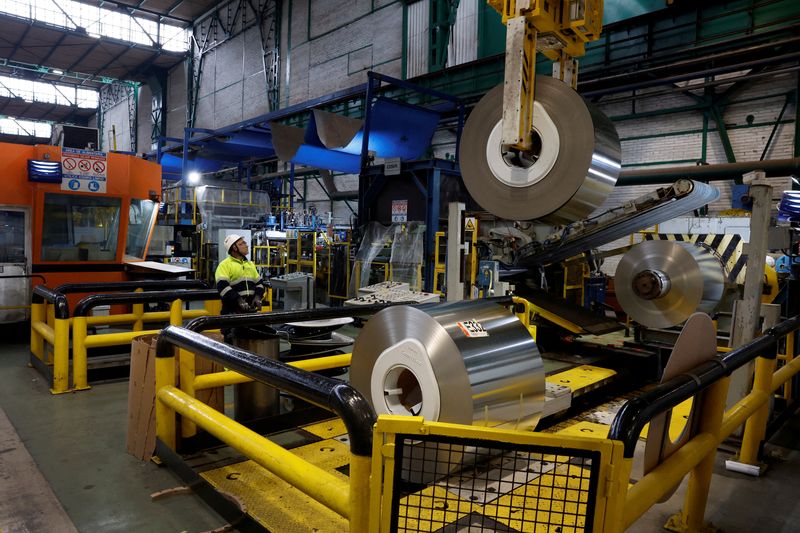FRANKFURT (Reuters) -Euro zone economic growth held up better than feared last quarter, suggesting that businesses are adapting to trade uncertainty, potentially reducing the need for more European Central Bank interest rate cuts to stimulate the bloc.
GDP in the 20 nations sharing the euro currency expanded by 0.1% on the quarter against expectations for an unchanged reading, as Spain, France and Ireland continued to perform above expectations, offsetting weakness in Germany and Italy, data from Eurostat indicated on Wednesday.
Compared to the second quarter a year earlier, the bloc’s economy expanded by 1.4%, ahead of expectations for 1.2%.
While the data still indicate a big slowdown compared with a 0.6% expansion in the first quarter, that figure was skewed by U.S. firms frontloading imports before new tariffs kicked in and did not reflect actual economic strength.
When examined together, however, the first two quarters suggest resilience, supported by the most recent PMI reading, which showed that business activity accelerated faster than forecast, supported by a solid improvement in services and the continued recovery in manufacturing.
Spain continued to shine, expanding by 0.7% on the quarter, while French growth at 0.3% was also above average. Meanwhile Italy and Germany both shrunk by 0.1%, Eurostat figures showed.
The U.S. has now also struck a trade deal with the European Union, further reducing uncertainty and brightening growth prospects, especially as trade deals with other major powers, including Japan and the UK, have also been agreed.
Although these deals mean higher tariffs, which could ultimately reduce euro zone growth by 0.2 to 0.4 percentage points on an annual basis, according to economist estimates, such an impact has already been factored into most projections.
Moreover, Germany plans to sharply increase budget spending from next year to fund infrastructure and defence, a boost to growth that will offset much of the tariffs’ impact, economists argue.
This economic resilience is a key factor why financial investors think the ECB is close to done easing borrowing costs after halving its key rate to 2% in the past 13 months.
Markets see just a 50% chance of another cut by December and a small chance that rates will actually start rising towards the end of 2026 as the economy gathers speed and price pressure starts rising again.
Uncertainty is far from over, however.
The EU has yet to sign its trade deal with the U.S. and plenty of detail remains to be worked out, indicating that it could take months for businesses to gain the confidence to make investment decisions.
China has also yet to strike a deal with the U.S., raising fears that Beijing will be forced to dump surplus goods on the rest of the world, depressing prices elsewhere.
Such dumping could then lower euro zone inflation and force the ECB into cutting interest rates on fears that below-target inflation, its main worry in the pre-pandemic decade, is returning.
(Reporting by Balazs Koranyi; Editing by Hugh Lawson and Alison Williams)
